For this bake of my usual country sourdough I wanted to see how well the aliquot jar correlates with pH readings. I have usually been shaping when the aliquot jar shows a 60% rise and now trying to push bulk wanted to cold retard when the rise is 110%. This might be a bit overproofed but we’ll see. From what I’ve seen shared from other bakers, they are shaping when pH reaches 4.4 and baking when pH is 4.1. Now I do not have my new pH meter so I think I have to take these readings with a grain of salt, but I did calibrate my meter prior to use but keep in mind the readings were taken by placing the meter’s blunt probe end into a separate small aliquot jar that I did so that readings wouldn’t affect the dough or the aliquot jar used for measuring rise. The pH meter for dough and bread is still back ordered so these reading maybe quite off. Ideally I should have taken a small amount of the dough and mixed it with water and then take a reading, but I was too lazy to do this.
The following are the readings I got.
600 am 600 slap and folds completed
620 am bench letterfold pH 5.64 proofer set at 80*F
640 am lamination
705 am coil fold pH 5.57
725 am coil fold pH 5.57
750 am coil fold pH 5.47
815 am coil fold pH 5.45
845 am coil fold pH 5.28
945 am aliquot rise 25% pH 5.1
1100 am 40% rise pH
1125 am 52.5% rise pH 4.8
1152 am 60% rise pH 4.4 shaped
1242 pm 75% rise pH 4.28 proofed 80ºF
102 pm 85% rise pH 4.21
130 pm 95% rise pH 4.01
205 pm 110% rise pH 4.02 into cold retard
715 am next day pH 4.02
So you can see that I didn’t cold retard at 4.1 instead when the aliquot jar showed 110% rise the pH had fallen to 4.02 a fair amount lower than 4.1. Surprisingly the pH the following day after 17 hours in the 3ºC fridge was the same 4.02. Given that 900 g of dough would take several hours to reach 3ºC I would have expected the pH to fall even further and was surprised that it did not. However, I’m not sure how accurate my pH meter truly is.
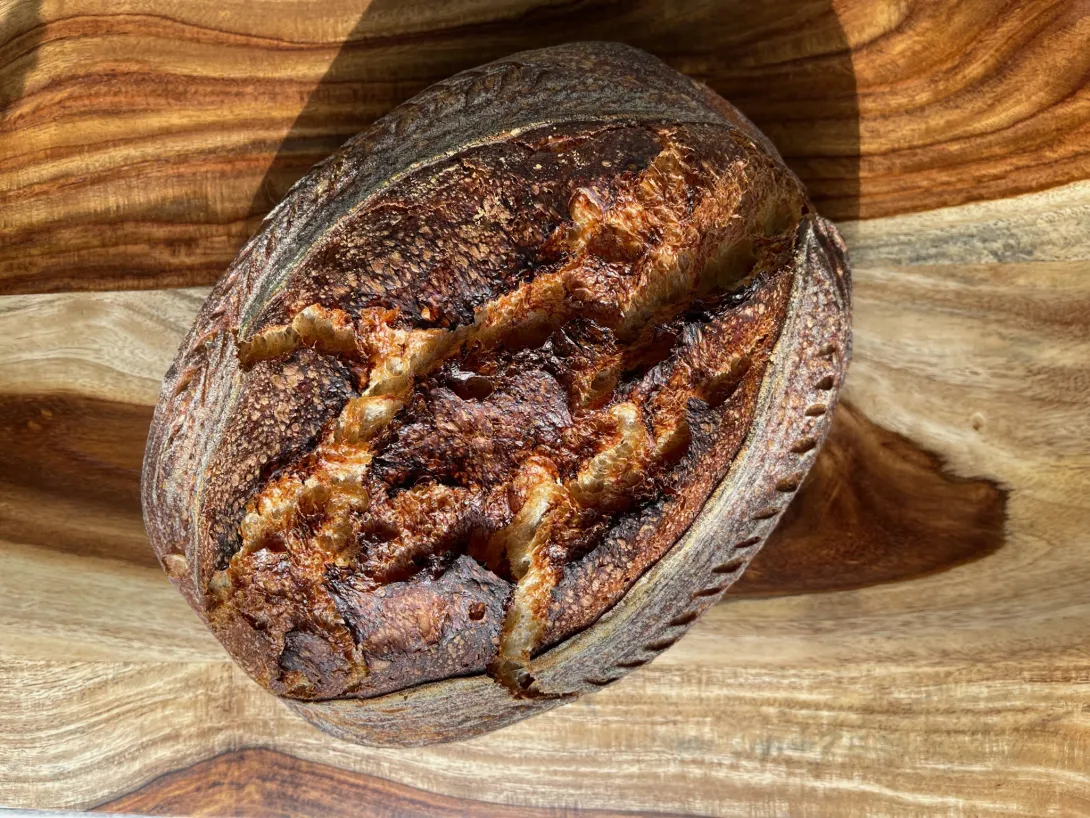
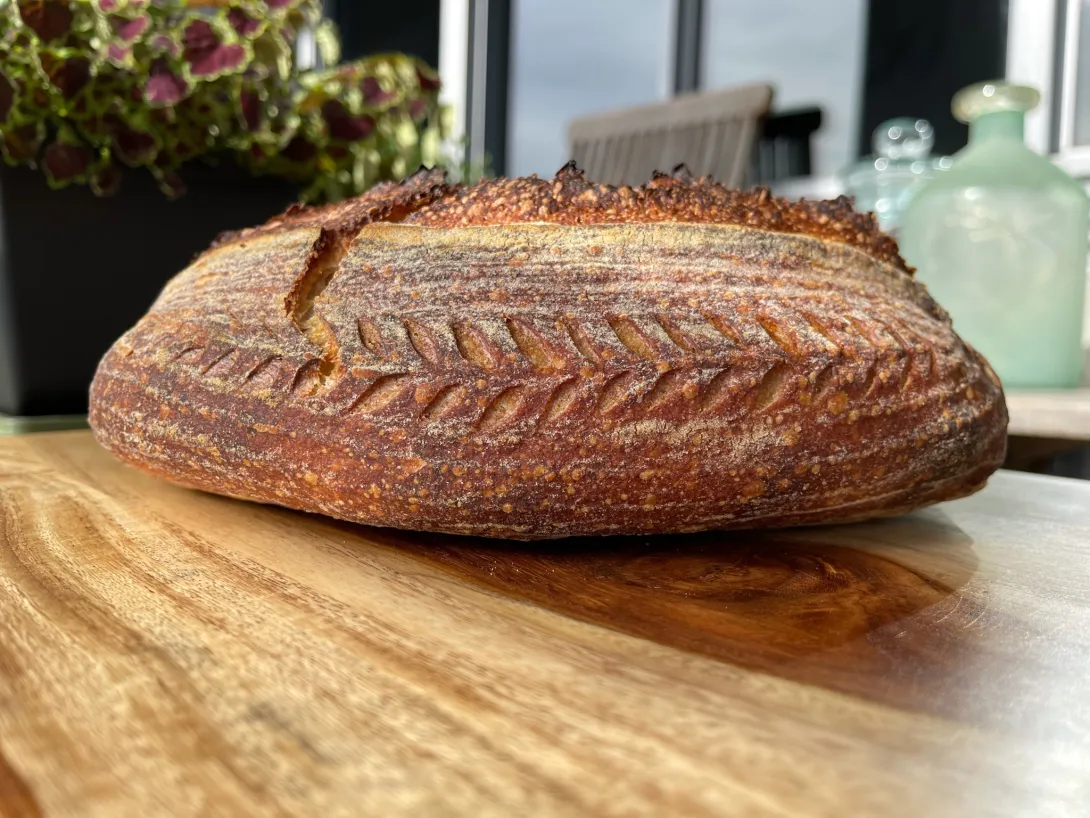
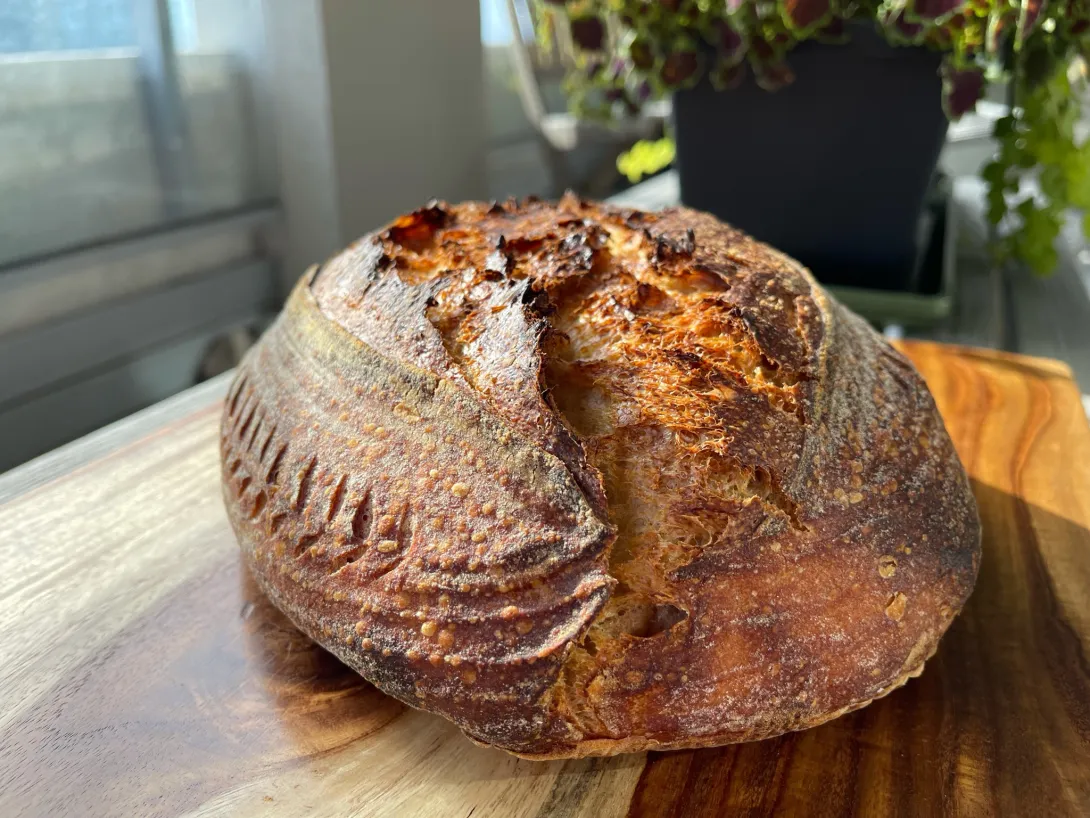
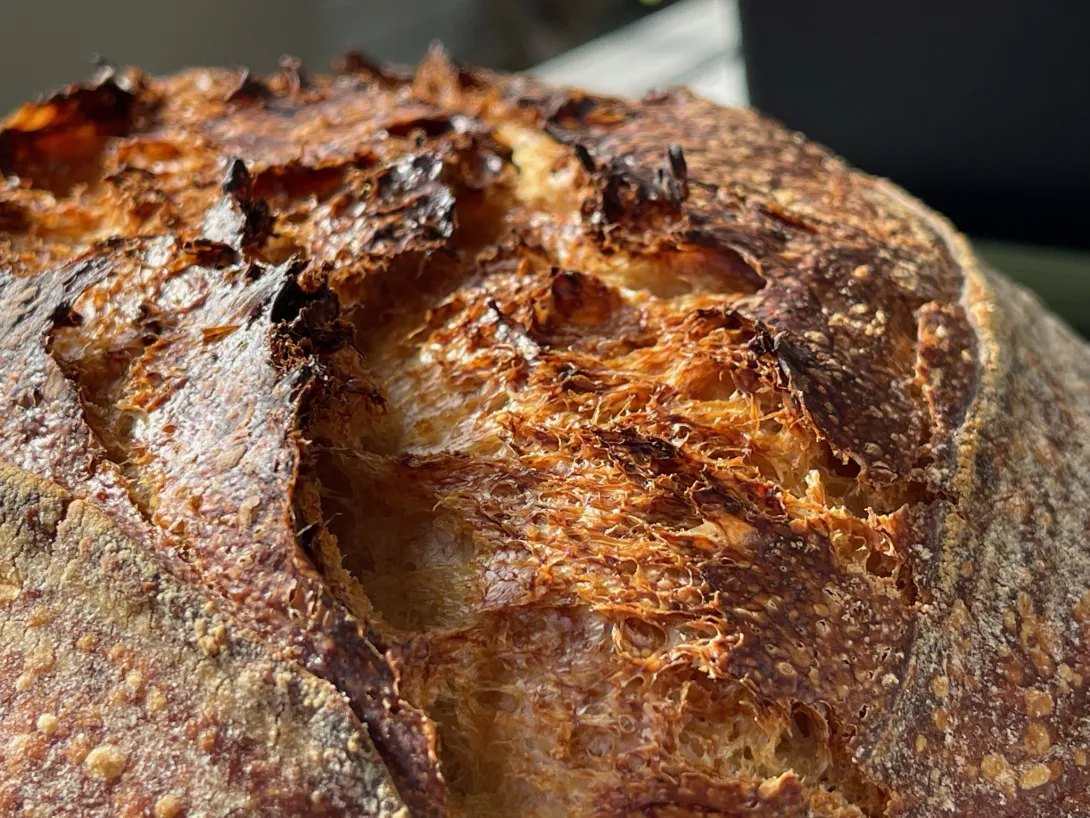
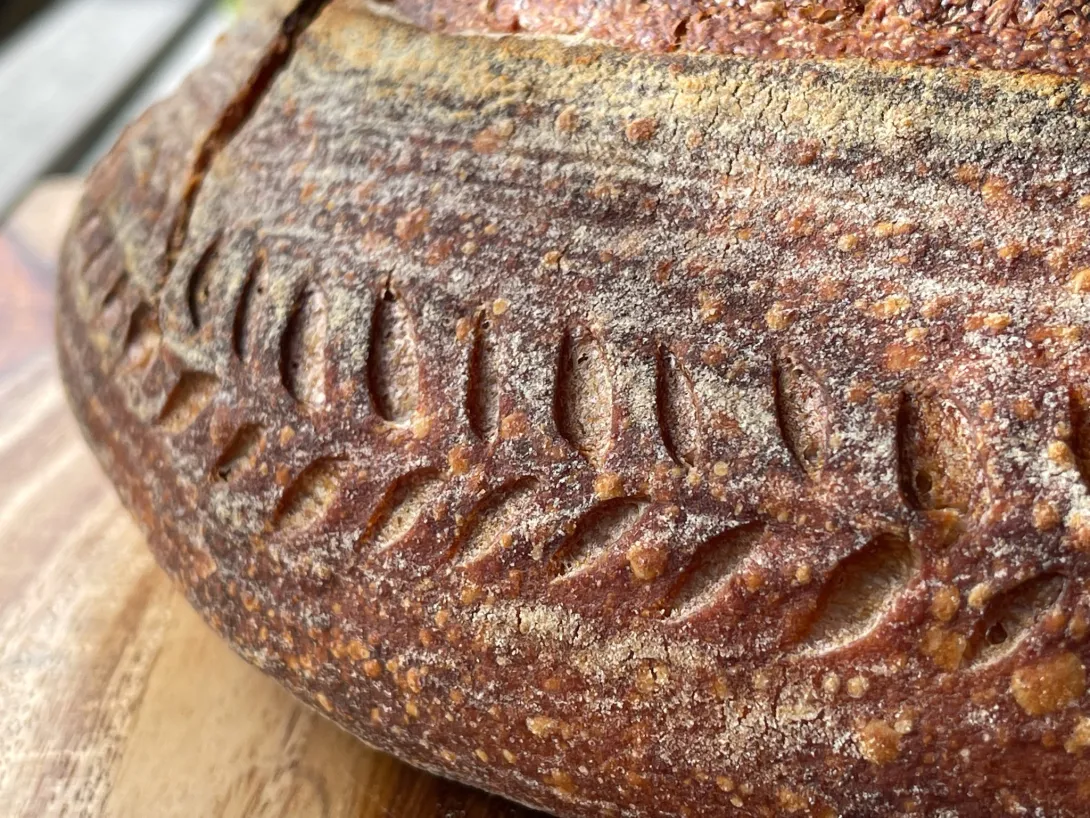
- Benito's Blog
- Log in or register to post comments
pH depends on temperature. Lower temperatures raises pH, so you probably have higher TTA, but same pH.
Here is a handy table, if you scroll down: https//www.chemguide.co.uk/physical/acidbaseeqia/kw.html
Very interesting Ilya I didn’t know that. I guess if I took a few grams of dough and dissolved it in ear water that might give me a more comparable pH reading. I’ll have to consider doing that in the future.
Benny
Yes, that should help.
In general, all simplest formulas and measurements assume standard conditions, of which the most variable is probably temperature (standard is 25°C). Also atmospheric pressure might vary a bit if you climb high up. Some things like pH are affected by it quite significantly, others (e.g. density of water) not so much.
Thanks for doing this!
Can I ask what's your starter maintenance routine? Have you taken readings of your starter at different stages? That might be relevant to the whole process as well.
I have a very simple starter maintenance with almost no waste or discard. I’ve also done the pH readings of my starter in the past and was quite comfortable with the pH over the course of seven days in the fridge. I haven’t done pH readings of my starter recently.
I aim to have 5 g of starter left after my baking over the course of a week. Because work has picked up again I’m finding it harder to bake twice per week so I’ve had a bit of discard lately. Anyhow, I will feed my 3-5 g of starter at the end of the week with about 15 g of water and 15 g of whole rye. I let it fully ferment until it has just past peak and then place it in the fridge immediately. Anytime I wish to bake during the week I remove whatever amount of starter I need for that recipe to make the levain without any refreshing of the starter. My levains built this way are very active. In fact you can go up to two weeks without refreshing your starter and go to a direct build of a levain. Any longer than two weeks then you should refresh your starter before building a levain. If I happen to require a larger amount of starter than I have I’ll just either feed it or do a two stage levain build so I have enough. My starter is now in a very small jam jar and takes so little space in my fridge.
Benny
I basically never refrigerate my starter. Your way seems very flexible. I'll definitely try that. Thank you for the description!
Looks good Benny. Curious if you scored as deep as normal. It almost looks like you scored shallow and the bloom went beyond your score depth. I’m looking on my phone and can’t tell for sure though.
Gives it a nice rustic look. I like it!
I did score a bit more shallow than usual, because with pushing bulk I was concerned about overproofing. Also with the pH so low, lower than what other bakers get at the time of baking already lower at cold retard, I knew there was some risk of spread. I agree though, it is an interesting rustic look that wasn’t on purpose.
I just quickly did some pH reading using a bit of the dough left in the aliquot jar but then quickly suspended in some water, warm vs cool. For a 20ºF temperature difference the pH of the cooler sample was 0.12 higher than the pH of the warmer sample. The fact that pH varies with temperature is news to me, they don’t teach this in medical school. Now it makes me wonder how they deal with this in the hospital labs. As a resident we relatively frequently did blood gases. This required an arterial blood sample to be drawn, usually from the radial artery in the wrist or in the femoral artery in the groin. Anyhow the sample is then placed on ice and we basically ran to the lab with the sample. I assume that the lab then must run this sample at a standard temperature. But then that wouldn’t take into account the patient’s temperature if they had a fever or not….
I'm fairly certain that we had a pH probe that also measured temperature and compensated for that.
This is a very interesting study. Regarding temperature and rate of fermentation it also seems intuitive that a fast ferment at a higher temperature, say 27 deg C and a slower ferment at say 23 deg C would have different pH curves.
That makes sense as well of course Jon. Interesting that you had a pH monitor that could compensate for temperature, very cool.
Benny, check the manual for your meter, does it have ATC (Automatic Temperature Compensation) ?
Even the cheap ones I've used have had it (I think it's quite a common feature). More expensive gear like the one in my wine lab have a separate dedicated thermometer. Holding both the temp probe and the electrode in one hand while swirling the solution in the beaker in the other hand to get a good reading while not letting the electrode knock against the bottom of the beaker is a multitasking nightmare!
For reference: What is ATC on a pH meter? - The Laboratory People (camblab.info)
I’ve checked on the website of the manufacturer Michael, there is no mention of any ATC for the model I have. It really was a cheapo model that I picked up not knowing if it would be useful or not. I have on order a Hanna bread and dough meter, a bit better but at least its designed for the task I need it for. I’ve also just checked the specs for the Hanna and it does have ATC, too bad it is still on back order I hope I get it soon.
all that. My background was ICU/CCU/Cath Lab (along with a few others) for many years. In some cases, both arterial and venous samples in Dixie cups filled with crushed ice were dashed off to the lab or RT analyzer. I suspect anyone you know who has experience with continuous ABG monitoring would be able to address the temperature (i.e. from fever, or iced sample vs continuous monitoring, or other) piece.
Mary
I didn’t know you worked in ICU/CCU/Cath Lab Mary, very interesting. I don’t know anyone with experience in continuous ABG monitoring, I’m sure they take that into account.
Yes I pushed bulk a bit too far as evidenced by the lack of ear and the somewhat flattish profile then the unremarkable crumb. Flavor is nicely tangy no surprise given the low pH of the dough at time of baking. I’ll have to dial back bulk next time and follow the pH a bit more closely, perhaps 100% rise is the max with this current flour. I may switch back to Robin Hood Bread Flour again.